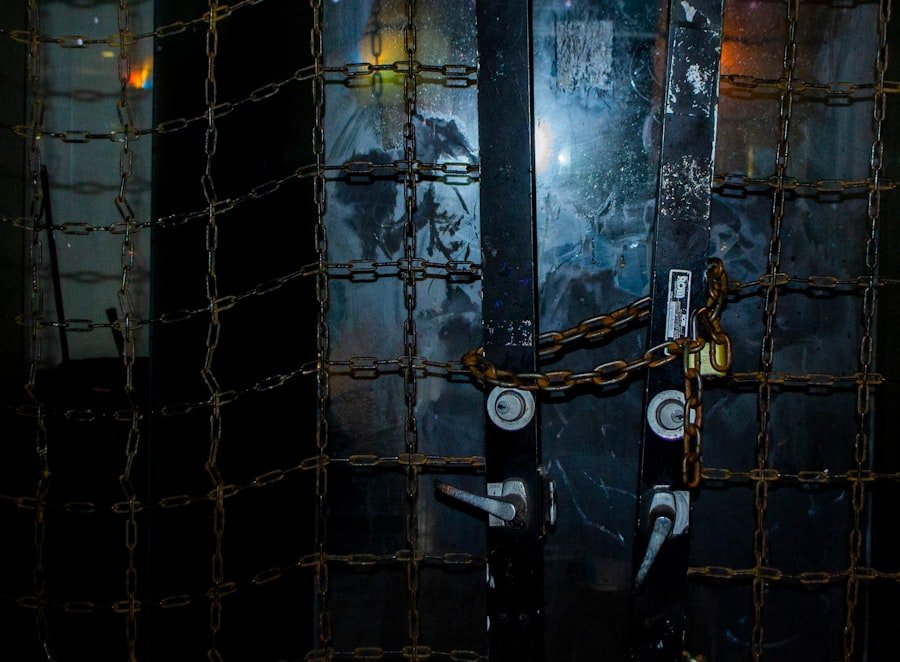The blocking feature on the iPhone is a powerful tool designed to help users manage their communication preferences and maintain their privacy. This feature allows individuals to prevent specific contacts from reaching them through calls, messages, and other forms of communication. By blocking a number, users can effectively cut off unwanted interactions, whether they stem from telemarketers, ex-partners, or simply individuals they no longer wish to communicate with.
The process of blocking is straightforward and can be done directly through the phone app or settings, making it accessible for users of all technical backgrounds. When a user blocks a contact on their iPhone, the device takes several steps to ensure that the blocked individual cannot initiate contact. This includes calls, text messages, and even FaceTime requests.
The blocking feature is not just a simple mute; it actively prevents any form of communication from the blocked number from reaching the user’s device. This level of control is particularly beneficial in today’s digital age, where unsolicited communication can be overwhelming. Understanding how this feature works is essential for anyone looking to take charge of their digital interactions and safeguard their personal space.
Key Takeaways
- The blocking feature on iPhone allows users to prevent specific contacts from calling, messaging, and accessing their FaceTime and iMessage conversations.
- When someone is blocked on iPhone, their calls and messages will not go through to the user, and they will not receive any notifications of the attempts.
- FaceTime and iMessage conversations with a blocked contact will not be accessible, and the blocked person will not be able to send any messages or calls through these platforms.
- Social media and apps are not affected by the iPhone blocking feature, so a blocked person can still interact with the user on these platforms.
- A blocked person cannot see the user’s profile and updates on social media and apps, as they are effectively restricted from accessing any content from the user.
- To unblock someone on iPhone, the user can go to the Settings app, select “Phone” or “Messages,” and then tap on “Blocked Contacts” to remove the contact from the blocked list.
How Blocking Someone Affects Calls and Messages
When a user blocks someone on their iPhone, the immediate effect is that any incoming calls from that number will not ring on the user’s device. Instead, these calls are silently redirected to voicemail, where they remain unseen unless the user chooses to check their voicemail inbox. This means that the blocked caller will not receive any notification that they have been blocked; they may simply assume that the user is unavailable or not answering their calls.
This silent treatment can be particularly useful for those who wish to avoid confrontation or drama associated with directly informing someone that they no longer wish to communicate. In terms of text messages, the impact of blocking is equally significant. Any messages sent by the blocked contact will not be delivered to the user’s device.
Instead, these messages are effectively lost in transit, leaving the sender unaware that their attempts at communication have been thwarted. The blocked individual may continue to send messages without realizing that they are not reaching the intended recipient. This lack of feedback can lead to confusion or frustration for the blocked person, as they may not understand why their messages are going unanswered.
For the user who has chosen to block someone, this feature provides a sense of relief and control over their communication landscape.
What Happens to FaceTime and iMessage Conversations

The blocking feature extends beyond traditional calls and text messages; it also encompasses services like FaceTime and iMessage. When a user blocks someone on their iPhone, any attempts by the blocked individual to initiate a FaceTime call will be automatically rejected. The call will not ring on the user’s device, and the blocked caller will receive no indication that their call was attempted.
This seamless integration of blocking across various communication platforms ensures that users can maintain their boundaries without having to engage in direct confrontation. Similarly, when it comes to iMessage conversations, blocking a contact means that any messages sent via this platform will not be delivered. The blocked sender may continue to send messages, but they will appear as if they are being sent normally on their end, with no indication that they have been blocked.
This can create a false sense of security for the sender, who may believe that their messages are being received and read. For the user who has chosen to block someone, this feature allows them to disengage from unwanted conversations while maintaining a level of peace and quiet in their digital life.
The Impact on Social Media and Apps
| Platform | Number of Users (in millions) | Engagement Rate |
|---|---|---|
| 2800 | 0.09 | |
| 1000 | 0.6 | |
| 330 | 0.045 | |
| TikTok | 689 | 0.52 |
Blocking someone on an iPhone does not limit its effects solely to calls and messages; it also has implications for social media interactions and various applications linked to the user’s account. Many social media platforms have their own blocking features that work in conjunction with the iPhone’s capabilities. For instance, if a user blocks someone on their iPhone, they may also choose to block that individual on platforms like Facebook or Instagram to ensure a comprehensive barrier against unwanted interactions.
This multi-layered approach allows users to create a more secure online presence. In addition to social media platforms, many messaging apps such as WhatsApp or Telegram also offer blocking features that function independently of the iPhone’s built-in capabilities. When a user blocks someone on these apps, it prevents any further communication through those channels as well.
This means that even if a blocked individual tries to reach out through an alternative app, they will still be unable to connect with the user who has chosen to block them. This interconnectedness between various platforms enhances the effectiveness of the blocking feature and empowers users to curate their digital interactions more effectively.
Can a Blocked Person Still See Your Profile and Updates?
One common question that arises when discussing blocking features is whether a blocked person can still view the user’s profile or updates on social media platforms or messaging apps. The answer varies depending on the platform in question. For instance, if a user blocks someone on Facebook, that individual will no longer be able to see the user’s profile or any updates shared publicly or within mutual groups.
This effectively removes any visibility into the user’s life for the blocked individual, allowing for a clean break in digital interactions. However, it is important to note that some platforms may have different policies regarding visibility after blocking. For example, on Instagram, if a user blocks someone, that person will not be able to see any posts or stories from the user’s account.
Yet, if the account is public, there may still be ways for the blocked individual to view content through other means or accounts. This inconsistency across platforms highlights the importance of understanding each service’s specific blocking features and privacy settings. Users should take care to review these settings if they wish to maintain complete privacy from those they have chosen to block.
How to Unblock Someone on iPhone

Unblocking someone on an iPhone is just as straightforward as blocking them in the first place. Users who have decided to re-establish communication with a previously blocked contact can do so by navigating through their device settings. To unblock someone, users can go to Settings > Phone > Blocked Contacts (or Messages > Blocked Contacts).
Here, they will find a list of all numbers they have previously blocked. By selecting the number they wish to unblock and tapping “Unblock,” users can restore communication with that contact. It is worth noting that unblocking someone does not automatically restore previous conversations or call logs; it simply allows for new interactions moving forward.
Once unblocked, any future calls or messages from that contact will come through as normal. However, if there were any missed calls or messages during the time they were blocked, those will not be retroactively delivered. This process allows users to maintain control over their communication preferences while also providing an easy way to reconnect with individuals when circumstances change or relationships evolve over time.
If you are curious about the privacy implications of blocking someone on your iPhone, you may want to check out the privacy policy of the app or software you are using. Understanding how your personal information is handled and protected is important when it comes to blocking someone. You can read more about privacy policies and terms and conditions on appssoftwares.com and appssoftwares.com.
FAQs
What happens when you block someone on iPhone?
Blocking someone on iPhone means that the person will no longer be able to call, text, or FaceTime you. They will also not be able to see your location or updates on Find My app.
Can a blocked person still leave a voicemail?
Yes, a blocked person can still leave a voicemail. However, you will not receive a notification for the voicemail and it will not show up in your voicemail inbox.
Will a blocked person know they are blocked?
The person you have blocked will not receive any notification that they have been blocked. However, they may realize they have been blocked if they are unable to reach you through calls, texts, or FaceTime.
Can a blocked person still see my profile picture and status updates?
No, a blocked person will not be able to see your profile picture and status updates on iMessage or FaceTime.
What happens to previous messages from a blocked person?
All previous messages from a blocked person will still be visible in your message history, but you will not receive any new messages from them.
Can I unblock someone after blocking them?
Yes, you can unblock someone at any time by going to the Settings app, selecting Phone, Messages, or FaceTime, and then tapping on Blocked Contacts. From there, you can edit the list of blocked contacts and choose to unblock someone.
